
What to see in the Baltics
Must-see art exhibitions in July-August, 2024
For the fourth time this year, we present an overview of what, in our opinion, deserves your attention, providing you with a selection of exhibitions and art events in the three Baltic countries. There are a lot of newcomers, but we have also included some long-running exhibitions that we mentioned in previous overviews. Don’t miss them; these exhibitions will conclude with the short but intense Baltic summer
ESTONIA, Tallinn
Kumu Art Museum
Collage: Diego Rivera. Danzantito (Child Dancer from Huejotzingo). Ca 1946 / Francisco Matto. Constructive in White and Black. Undated. © The Phoebus Foundation, Antwerp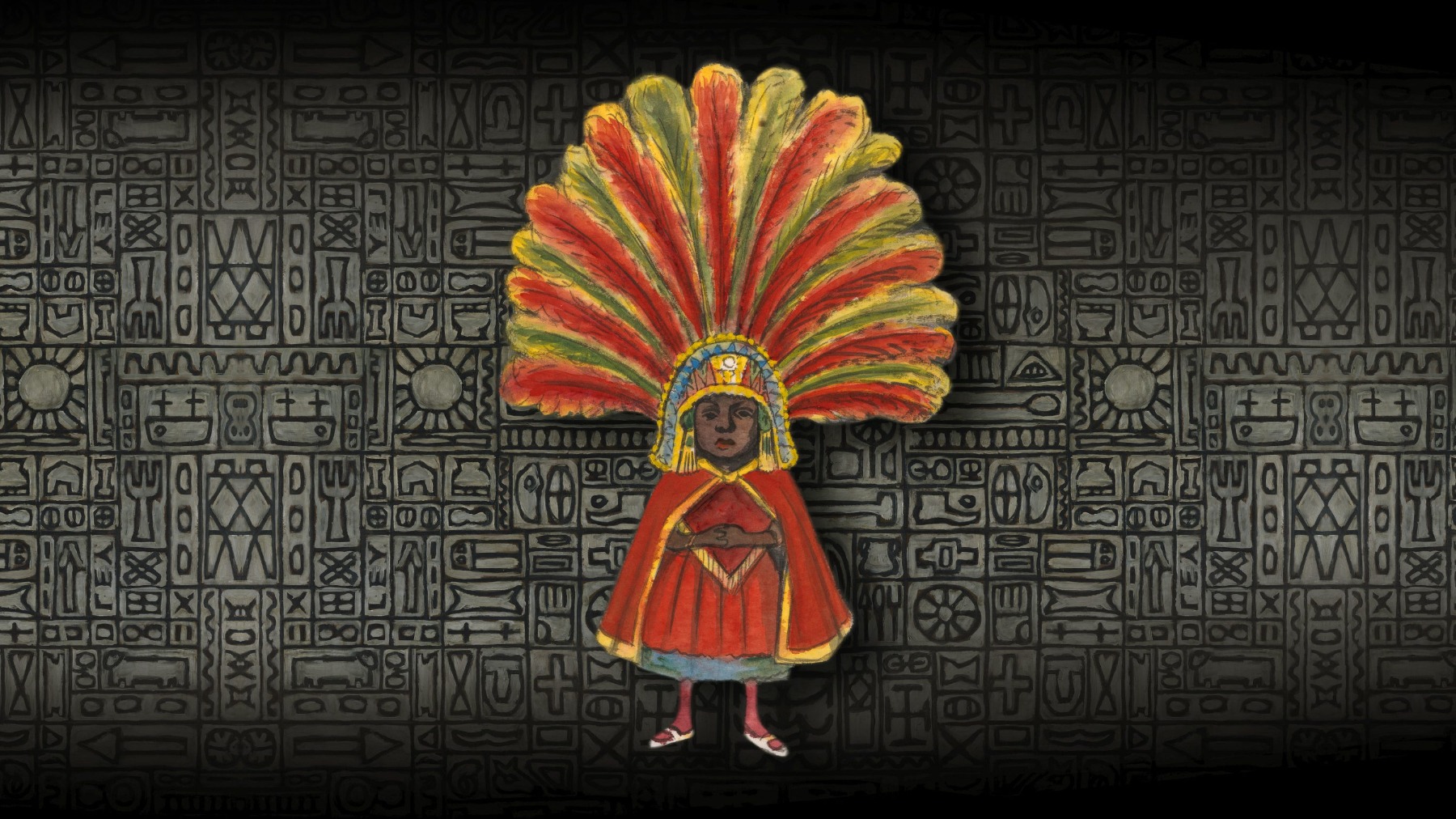
History and Mystery: Latin American Art and Europe
Until 3 November
This is the first time that Latin American art has been exhibited on such a large scale in Estonia. This has been made possible through collaboration with The Phoebus Foundation in Antwerp, which owns one of the largest collections of Latin American art in Europe. The exhibition features art from two eras: the Spanish Colonial period from the 17th to the 19thcentury, and the modernist art of the 20th century from Argentina, Colombia, Cuba, Mexico, Peru, Chile, Uruguay and Venezuela.
The exhibition focuses on relations in art between Latin America and Europe. In the colonial period, art was a powerful medium to spread Christianity and justify the social hierarchies imposed by the Spanish colonial rule. In the 20th century, a different relationship emerged, when contacts between artists developed in Paris, Madrid and other European art centres, and with European exile artists in Latin America. In both colonial art and 20th century modernist art, the European influences merged with local indigenous cultures, resulting in a unique Latin American visual language.
Leonora Carrington, Ajusco 2 a.m, 1987, oil on canvas © The Phoebus Foundation, Antwerpen
Leonora Carrington
Until 3 November
The British-born artist Leonora Carrington (1917–2011), whose work attracted renewed attention at the 59th Venice Biennale in 2022, is one of the most interesting Surrealist painters and novelists. Carrington spent most of her life in Mexico, where she fled during the Second World War to escape the Nazi regime, to recover from a mental breakdown, and because of her complicated relationship with Max Ernst. The Kumu project space features seven paintings by Leonora Carrington from her Mexican period, which are characterised by her unique style and fanciful, symbolic imagery. The year 2024 also marks the 100th anniversary of Surrealism worldwide. The display of Carrington’s paintings in the 4th-floor project space is part of the exhibition History and Mystery: Latin American Art and Europe. Both exhibitions have been organised in collaboration with The Phoebus Foundation, from whose collections the works on display come.
Tallinn Art Hall
Foto: Mari Männa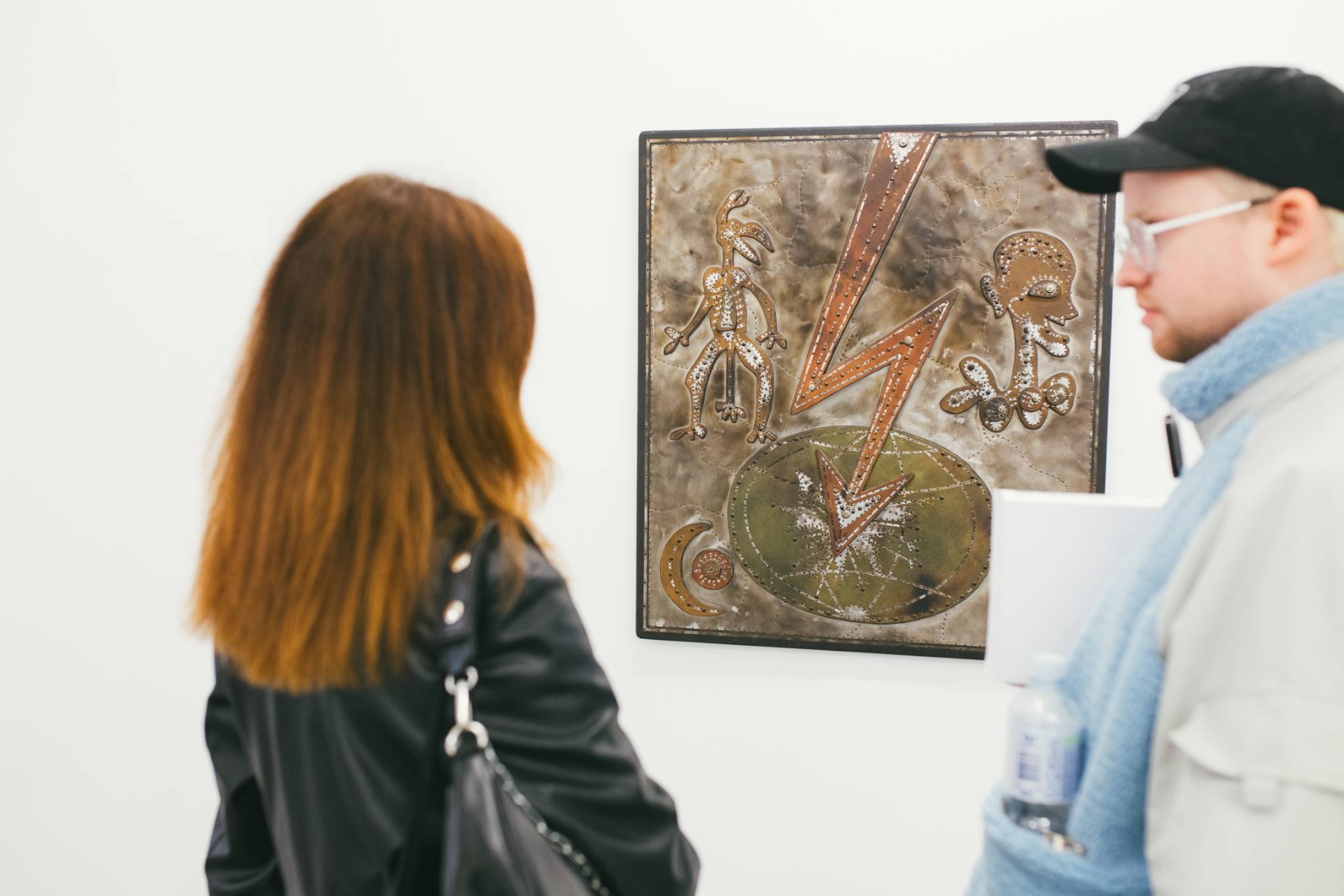
Exit Elephantine
Until 17 August
The group exhibition Exit Elephantine curated by Lithuanian contemporary art curator Edgaras Gerasimovičius features artists Natalie Czech, Tata Frenkel, Robertas Narkus, Agnieszka Polska, Nesim Tahirovič and Gintautas Trimakas. This exhibition explores how a border in one person’s life can become a line in another person’s drawing. Using plastic means, the works displayed interpret the stories of individuals and communities who have found themselves behind a specific physical, psychological, political or social border – voluntarily, accidentally or forcibly.
Not all works in the exhibition are artworks. Some are fragments of larger works, remnants of the production process, or even rumours. This eclectic polyphony creates a space where losses and errors from the translation process hint at the meeting of the personal and the collective. Here poetics of escapism becomes a tool to dismantle the narratives of the mainstream politics of escapism. In the exhibition title, the Ultima Thule of the ancient world, the island of Elephantine, takes on the role of a clumsy, heavyweight character in a well-known English metaphor representing an evidently ignored problem. Neither imperative for action, nor a thing, Exit Elephantine is a more of an error mode of semantic production for intimacy and ultimate distance to intersect.
Fotografiska
Hemoglobin, 2017 © David Ụzọchukwu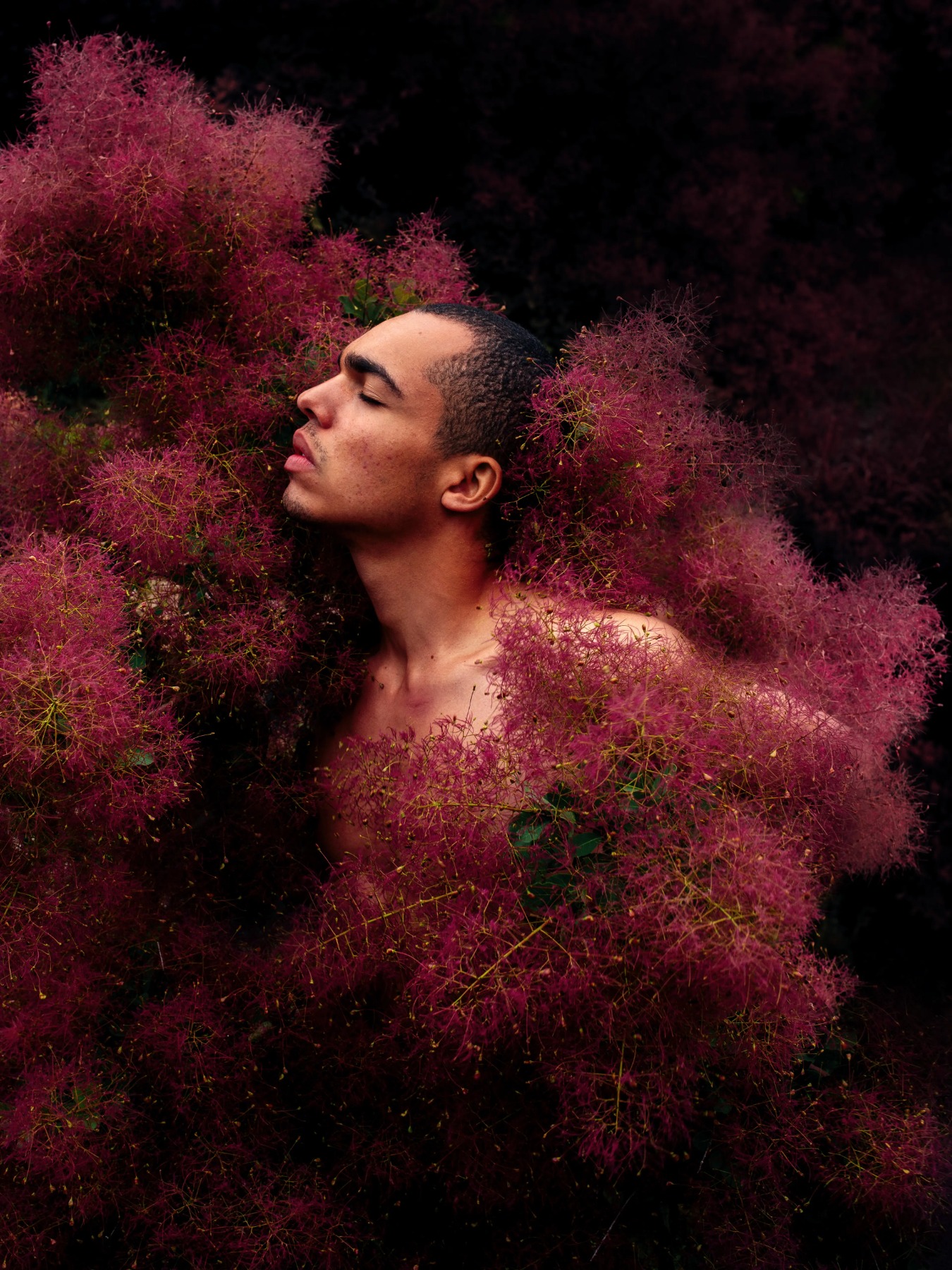
In Bloom
Until 27 October
Nature is enigmatic. Strong and noble, yet fragile and fleeting. Tamed or wild, groomed or untouched, influenced and altered by humans. Bright and beautiful, yet simultaneously dark and ominous. It is a sacred refuge from which all has evolved. In the exhibition "In Bloom", the awe-inspiring meets the delicate, the beautiful encounters the dangerous, and the familiar confronts the unknown. A blend of contemporary photography, video, sculpture, and installations highlights nature's placement in contemporary art. The beauty, richness, fragility, and diversity of nature are represented by 17 contemporary artists, all of whom are interested in understanding, discovering, and expressing themselves in this world. Together, they have created an inspiring and conceptual philosophical reflection on the cycle of life and death and the variability of time. Among the renowned international artists, acclaimed Estonian artist Heikki Leis is also represented.
The exhibition "In Bloom" features the work of 17 contemporary artists from around the world: Alfredo De Stefano (Mexico), Cig Harvey (United Kingdom), David Ụzọchukwu (Germany), Djeneba Aduayom (United States), Xuebing DU (United States), Santeri Tuori (Finland), Brendan Pattengale (United States), Ori Gersht (United Kingdom), Catherine Nelson (Australia), Esther Teichmann (United Kingdom), Helene Schmitz (Sweden), Lori Nix & Kathleen Gerber (United States), Yan Wang Preston (United Kingdom), Inka & Niclas (Sweden), and Heikki Leis (Estonia). The summer grand exhibition "In Bloom" also marks Fotografiska Tallinn's 5th anniversary.
EKKM

Down in the Bog – Sporulation
Until 01 September
The international group exhibition Down in the Bog – Sporulation, in which participating artists, designers, and natural scientists encourage the visitor to think about and together with the ecosystems of peatlands, was curated by Karolin Tampere, a Norwegian curator with Estonian roots.
The second project of EKKM’s 2024 season brings together representatives of different disciplines who are rethinking the cultural, historical and contemporary changes in the peatlands of Northern Norway / Sàpmi, Estonia and other selected regions. Visitors can experience the work of Ensayos, an international nomadic feminist research group that through scent, sounds and objects explore themes centred on the prevention of extinction, interspecies dialogues and memory. Artist Hilde Hauan Johnson presents a large-scale textile work that was coloured with dyes from plants collected from border areas in Sàpmi. For their joint video piece, Ingrid Bjørnaali, Maria Simmons and Fabian Lanzmaier used various devices to make field recordings of bogs, based on which they created 3D models and landscapes inspired by the technical glitches which, in their eyes, express the unique characteristics of bogs. Kristina Norman’s work, first exhibited in the Estonian pavilion at the 59th Venice Biennale, visualises the capitalist thirst for peat mining and emphasises the connections between the Estonian bogs and the global orchid market. Norwegian artists Geir Tore Holm and Søssa Jørgensen have given form to the knowledge they gained from researching Sami reindeer herders in the Setesdal areas in an audiovisual work that interweaves video footage with a musical composition of Hardanger fiddle and yoik – a traditional Sami vocal tradition. Estonian artist Eike Eplik and artist Søssa Jørgensen from Norway present new works created especially for the exhibition. The exhibition opens with a spoken word performance by Geir Tore Holm.
Temnikova & Kasela Gallery
Merike Estna. Ese Dia. Acrylic, oil, canvas. 2023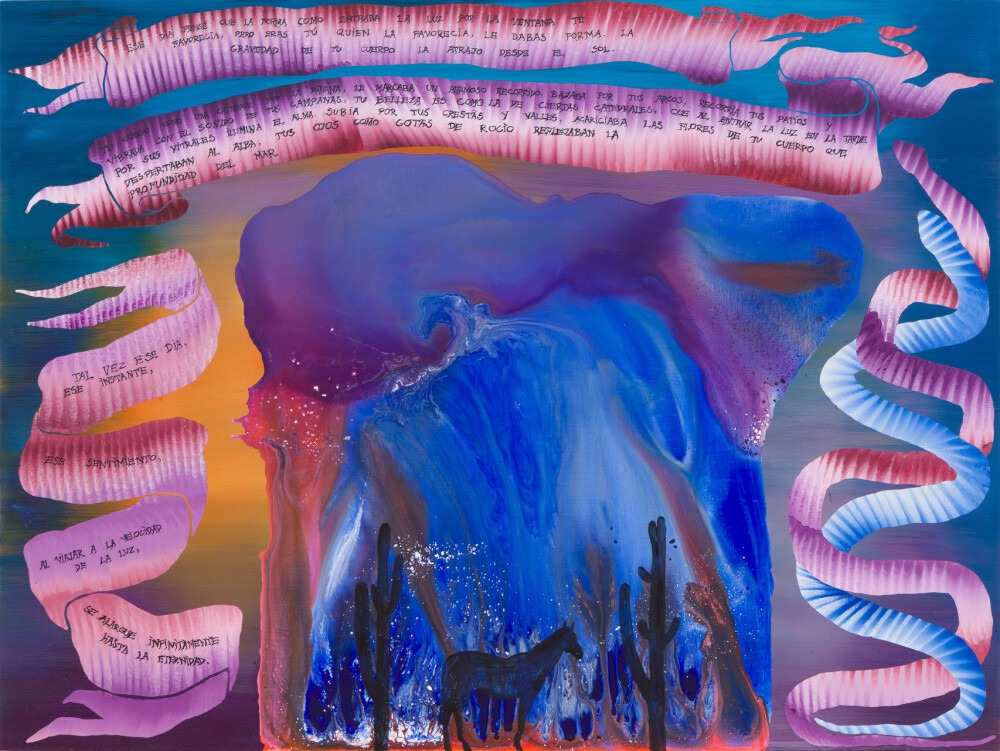
Merike Estna. Peradam
Until 18 August
The name of Merike Estna’s exhibition “Peradam” comes from René Daumal's allegorical novel Le Mont Analogue (1952), where it depicts a special crystal stone. In the novel a bunch of adventurers decide to embark on an expedition to a mysterious mountain at the end of the world. For this, one must first obtain the crystal clear gemstone peradam, which can only be found by someone who is truly looking for it. In the exhibition, artist Merike Estna reflects on where human civilization is heading and how our prospects can sometimes seem as hopeless as reaching the mystical mountain in Daumal's novel. References to art history and literature can be recognized in the works exhibited, and the artist has also brought in personal memories and experiences. Merike Estna is a painter who, in addition to the canvas, often includes environments, objects and bodies with her brushstrokes. Similar to the paintings in the "Peradam" exhibition, in other recent works she has also borrowed references from history, literature and myths and connected them with contemporary themes and personal stories. She has become especially close to Mexican culture, where she has been living and working for many years. "Peradam" is a continuation of the exhibition "Analog Mountain", which took place at the Margot Samel Gallery in New York in March 2024.
ESTONIA, Tartu
Estonian National Museum
Jüri Palm. A Labyrinth of Gardens. 1983–85
Surrealism 100. Prague, Tartu and Other Stories...
Until 8 September
The Estonian National Museum and Tartu Art Museum invited the National Gallery Prague to collaborate on the exhibition Surrealism 100. Prague, Tartu and Other Stories… at the Estonian National Museum because Prague was the other important centre of surrealism in Europe during the 20th century besides Paris: the artists communicated closely with their Parisian counterparts and a programmatic approach was used for surrealism. The most important authors of the surrealist movement in Prague were Toyen and Jindřich Štyrský for the first generation, Mikuláš Medek, Emila Medková, Josef Istler and Václav Tikal for the second one, and Jan Švankmajer and Eva Švankmajerová for the third one. Surrealism 100. Prague, Tartu and Other Stories … is an exhibition in which Czech and Estonian surrealism will start a dialogue. The two sides seem very different, but the two countries do share the complicated fate that during the 20th century they were in the sphere of influence of the Soviet Union.
Kogo gallery
Photo: Marje-Eelma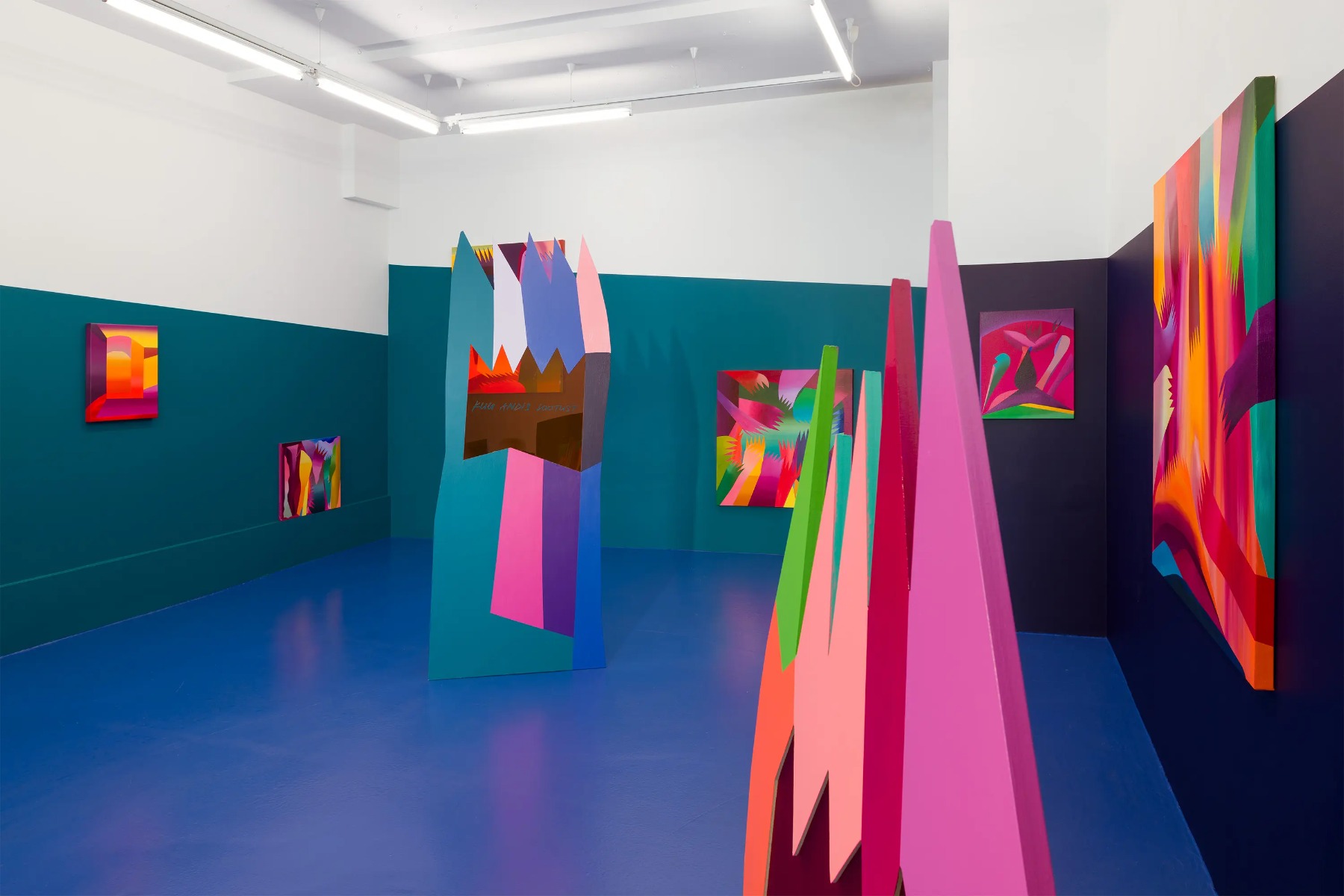
Kristi Kongi. Water is an Eternal Witness. Colour Indigo
Until 3 August
In the depths of the internet, one can find plenty of random videos that capture natural disasters. One such video shows an indoor swimming pool full of water standing still as if waiting for something. Suddenly, bigger and bigger waves start to build until a huge one pushes the water body out of the pool, taking over the rest of the space. While this dramatic scene was originally caused by a sudden earthquake, the turbulence in nature that caused this great spectacle can also serve as a visual metaphor for the mind’s changing from a state of calm to one of agitation. In her latest solo exhibition at Kogo Gallery, Kristi Kongi uses water as a strong poetical symbol to explore the beautiful fragility of complex emotions and builds an imaginative world in the form of aquatic landscapes. Like water, Kongi’s artistic approach can be described as fluid and in constant motion. The motives and compositions float and develop instead of rapidly changing. Her sight is fixed on certain horizons, which she studies with the help of light, colour and shadow-like forms.
LATVIA, Riga
Exhibition Hall ‘Riga Contemporary Art Space’
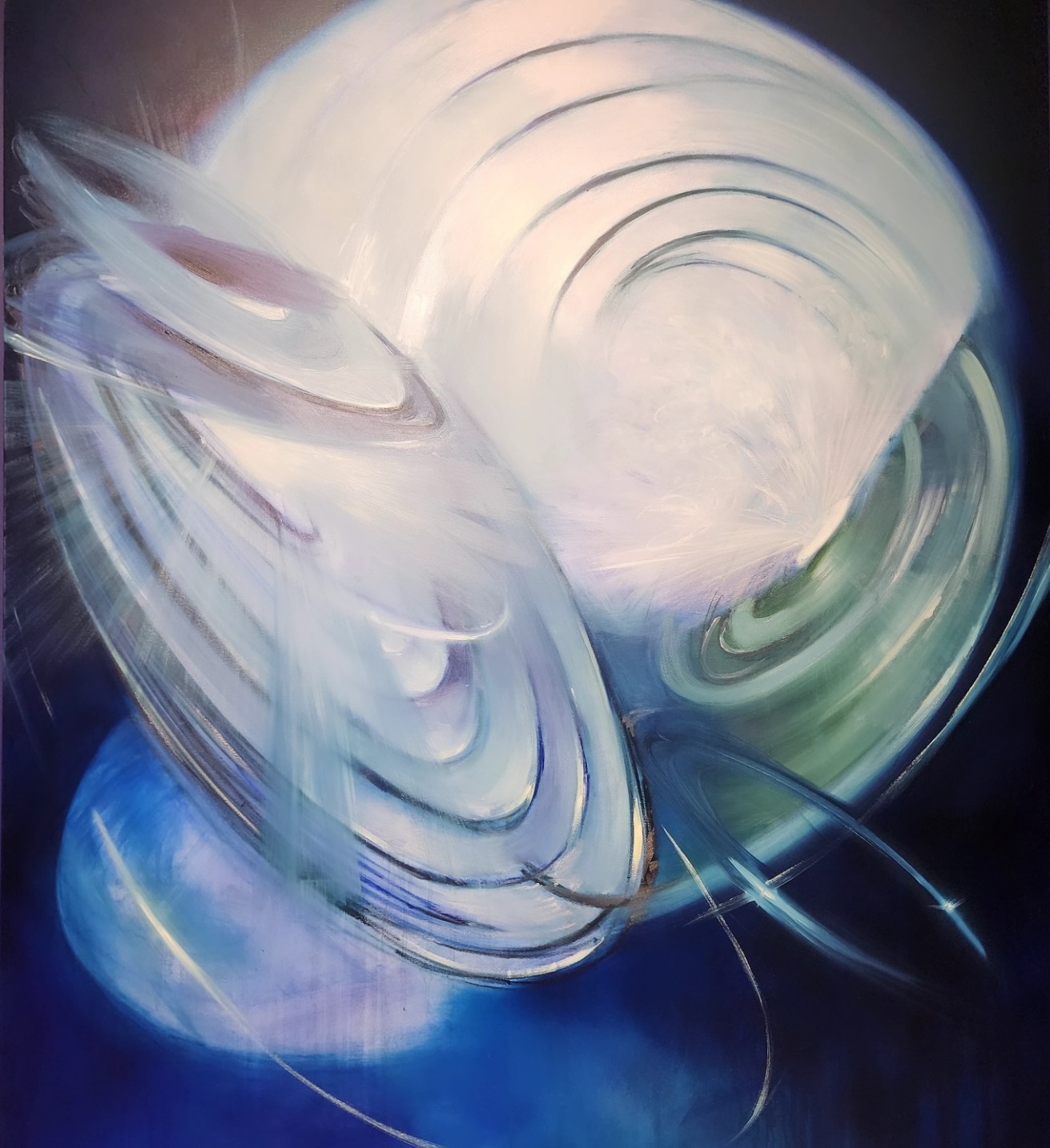
Atis Jākobsons. Heaven's bodies
Until August 25
'Heaven's bodies' is Atis Jākobsons's exploration of our relationship to the world on the level of vibrational energy and its tangible manifestations in nature, exploring its profound impact on the human psyche and subconscious. As viewers step into the exhibition, they are immediately enveloped by an immersive landscape that harmoniously combines color, light, and sound, guiding them on an introspective journey. Atis's artworks unfold sequentially, inviting visitors to experience a gradual revelation of the unseen energies that permeate our reality. The initial encounter with the vibrant pastels introduces the viewer to the raw, intuitive gestures that form the foundation of Atis’s practice. Smudged and velvety shapes reflect the artist's movements and embodies alive intuitive patterns that translate frequency into visual language. The spontaneous nature of pastel drawing allows new forms to come into being every moment, transforming the creative process into an active exploration of energy.
Latvian National Museum of Art
Photo: Kaspars Teilāns
In the Name of Desire
Until 28 July
The exhibition sheds light on authors in Latvian 20th century art history who have bravely taken up the investigation of sexuality and the phenomenon of desire. Furthermore, contemporary artists participate in this project with existing or specially created works, interpreting this socially still awkward subject in the media of painting, graphic art, photography, sculpture, installation, and video art. The exhibition critically revisits the objectification of women’s bodies in visual art, shifting the focus to the representation of the female experience and a feminist approach. For the first time in Latvia, Baltic queer art is surveyed at such breadth, demonstrating inclusive thinking and openness towards questions of self-identity regarding awareness of one’s sexuality. Continuing the institutional critique began in the exhibition Don’t Cry!, curated by Elita Ansone, In the Name of Desire for the first time in the history of the Latvian National Museum of Art presents a representative selection of Latvian LGBT+ art.
Kim? Contemporary Art Centre
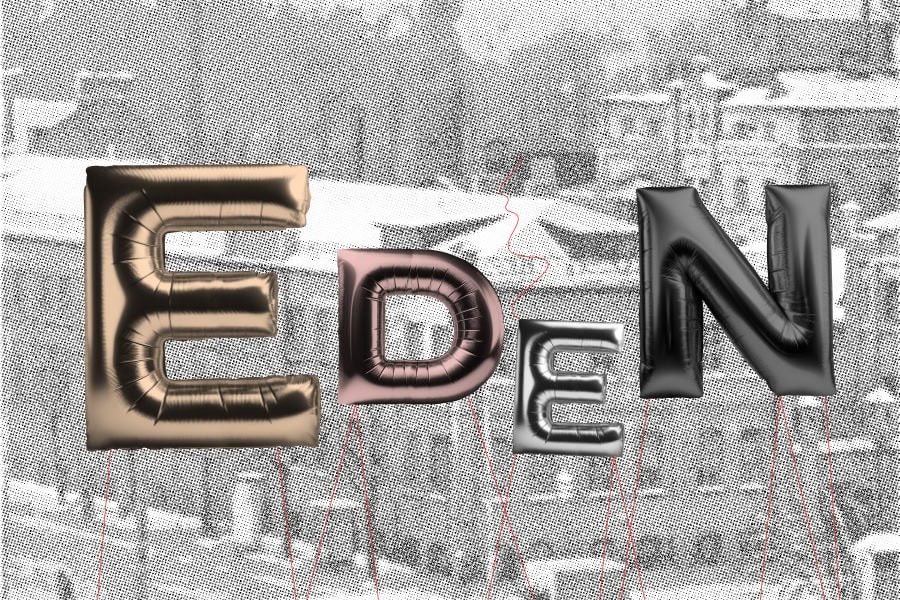
EDEN
Until 28 July
To mark 15 years since its founding, Kim? Contemporary Art Centre announces an annual contemporary art festival in Riga. Since starting its public activities in 2009, Kim? has retained the status of a key platform in the region’s art scene, consistently providing rigorous contributions to contemporary art programming. As it celebrates its anniversary and ponders its future directions, Kim? is expanding its physical and programmatic ambition by presenting its soon-to-be new premises – a historic building awaiting renovation and the adjacent inner courtyard at Hanzas iela 22, marking an exciting step not only for the institution but for Latvia’s art scene and the Baltic art scene in general. Conceptually, EDEN unfolds as an exhibition/site/performance. In constructing EDEN, one of the more obvious questions considered had to do with the fear of being expelled from it. But where there is doubt, a new opportunity appears to contest conventional visuality as a norm in producing an effect. In dialogue with the participating artists, the thematic arc of EDEN is marked by a turn to the illusory tools of self-representation, reflections on contemporary society in its manifold manifestations, ruling ideologies, and public and private space.
Zuzeum Art Centre
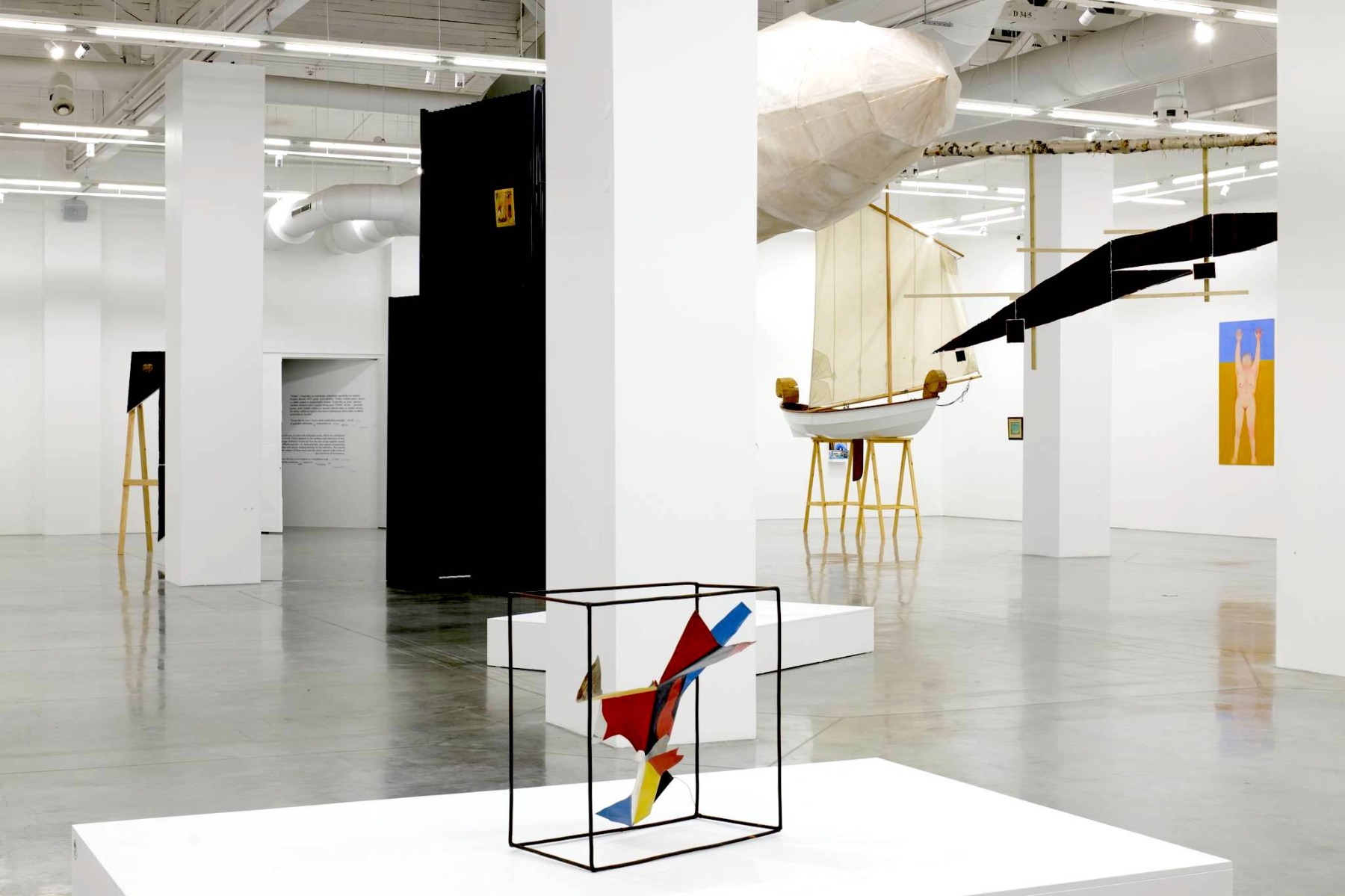
Straight, No Chaser*
Until 28 August
Straight, No Chaser* – summer season exhibition in the Great Exhibition Hall of the Zuzeum Art Centre. Artistic directors are the Paris based exhibition-oriented research group La Méditerranée, cofounded in 2020 by artists Mateo Revillo, Edgar Sarin, and art historian Ulysse Geissler. To describe the method of La Méditerranée, one could put forth an analogy of the musical practice of Jazz. The almost tactical use of improvisation is what brings together the members of the research group – humanism, perspective, jazz – and constitutes the engine of the enterprise. Exhibition scenography is rooted in the history of the Riga city but also echoes the singular nature of the expansive Zuzāns Collection. Through the fresh perspective and unique approach La Méditerranée creates new dialogue between the diverse artworks and the audience. The singular parts of history, bits of geography, and patchworks of individual paths that inform the unique form of each work are the different pulses that mark the rhythm of viewership.
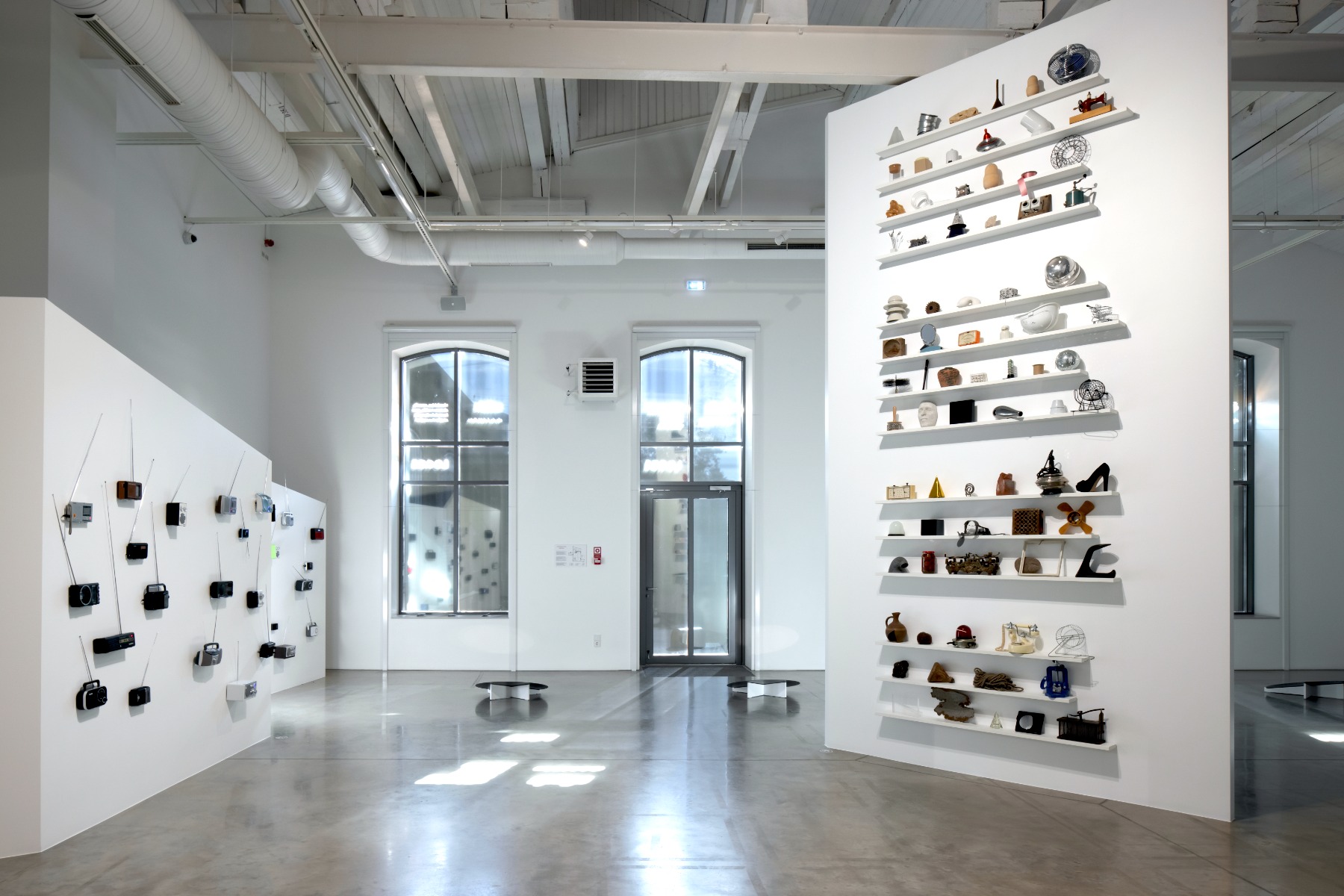
Orbita. Grotto Far From the Sea
Until 28 August
Exhibition Grotto Far From the Sea brings together several works from different periods by the collective Orbita – or, more precisely, new versions of previously realised ideas and objects created specially for this exhibition. Orbita is a collective of poets and multimedia artists from Latvia. Its members are Semjons Haņins, Artūrs Punte, Vladimirs Svetlovs and Sergejs Timofejevs. The project was established in 1999. In its work, Orbita depends on the synthesis and interaction of text, sound and image. Although the presence of text is not a necessary condition, often the authors' own poetic texts serve as the impulse for the creation of the works. Grotto Far From the Sea is an invitation to a meditative walk, to drift between flickering revelations and tune in to a receding yet perceptible wave. In the selected installations, ordinary everyday items are used to perform a function not typical to them – the transmission of a poetic message. The exhibition also involves such actants as sunlight and airflow. The exhibition Grotto Far From the Sea takes place during the 25th anniversary year of Orbita's existance.
ISSP gallery
Uldis Brauns. Akniste Townscape. A motorcycle with sidecar and a truck on the street. 1956. From the Latvian National Archives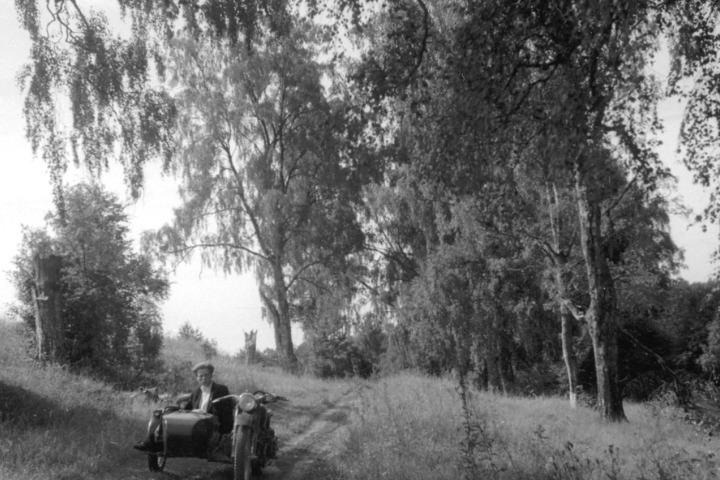
Annemarija Gulbe, Konstantīns Žukovs: Contemporary Histories of Photography II
Until 16 August
The task of Latvian photography researchers in the 21st century is to construct and deconstruct simultaneously – to fill extensive “blank spaces” and critically review existing narratives. The exhibition cycle highlights the subjectivity of every version of history and various facets of local photography. Contemporary artists have created new works in dialogue with photographers and phenomena from different periods. Their alternative historical interpretations illuminate the diversity of perspectives and offer a departure from a potentially didactic canonical version.
Movement and the urge to document have been key impulses in the history of photography as well as the development of cinematic language. Annemarija Gulbe highlights the intersection between a documentary approach and the poetry of montage, illuminating the road as part of the Latvian landscape through the legacy of photographer, cinematographer, and director Uldis Brauns (1932-2017). Though well-recognized as one of the pioneers of the Riga School of Poetic Documentary Cinema, Brauns' post-war record of the Latvian countryside in humanistic photography remains underexplored. Brauns stated that for him, photography is the foundation of cinema. The choice of filming locations for his only feature film, Motorcycle Summer (1975), was also informed by his personal archive of photographs.
Re-evaluating the existing history of photography also calls for a focus on marginalized, hitherto unknown or hidden stories. How can we find visual evidence of people and communities for whom visibility has been unwelcome and even dangerous? Contemporary perceptions of sexuality, gender, and sex offer new possibilities of interpretation, but need to be adapted to the realities of past eras. Konstantin Zhukov continues his artistic research on queer histories in Latvia, this time focusing on the Latvian National Opera as a stage, an urban locale, and a community, spanning different time periods. Zhukov emphasizes the silenced and censored side of history—personal stories that can be read between the lines. The language of this fragmented history is formed by coded gestures, hints, and hushed whispers.
Maksla XO gallery
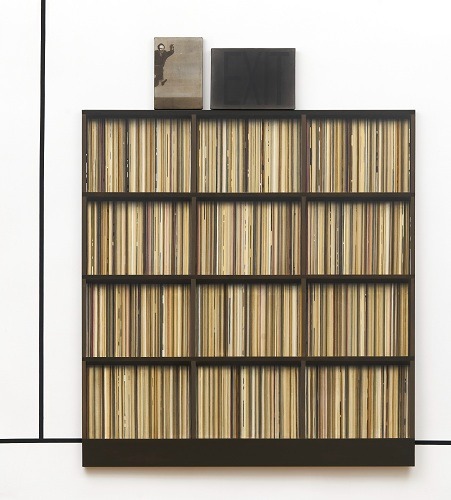
Ieva Iltnere. My Own Room
Until 10 August
Ieva Iltnere’s “My Own Room” is her studio, where characters for paintings are lived and created. The termin “my own room” defines a space. This painted dimension characterizes Ieva Iltnere’s practice as a painter, and the viewer can get closer to this creative process’s origin. Ieva Iltnere reveals what inspires her – paintings, books, photographs, design objects, fashion, architecture, and ethno-culture. With her unique talent, Ieva Iltnere creates the space within her paintings in a way that suggests the visible scene has existed forever. She has the ability to balance images, objects, and landscapes regardless of their origin and historical period. Ieva Iltnere thinks in terms of spatial context, interrupting the planes of a room by bringing together different, sometimes completely opposite, objects.The poetic and metaphorical force of “My Own Room” focuses on the contemplation between life and imagination, existence and artistic creativity.
TUR_telpa
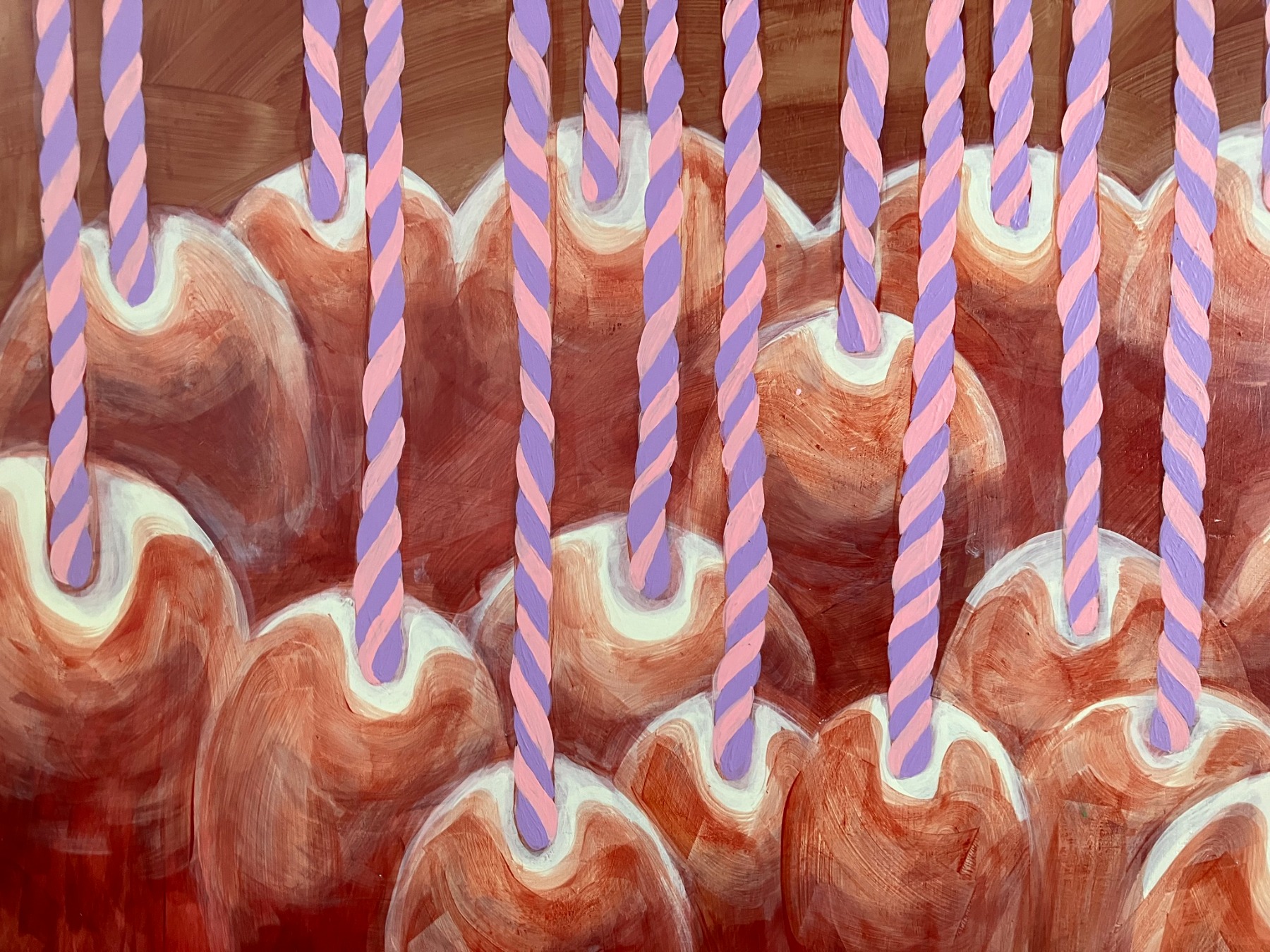
Ieva Saulīte. Breaking Down Structures of Affection
Until 10 August
For the second exhibition of the 2024 summer cycle “Breaking Down Structures of Affection,” TUR presents new work by Ieva Saulīte. Inspired by her practice of automatic drawing, Saulīte explored how personal experiences, cultural heritage, popular culture, and environmental influences shape our perception of the world
LATVIA, Daugavpils
Daugavpils Mark Rothko Art Centre
Gints Gabrāns. Mountain of Fungas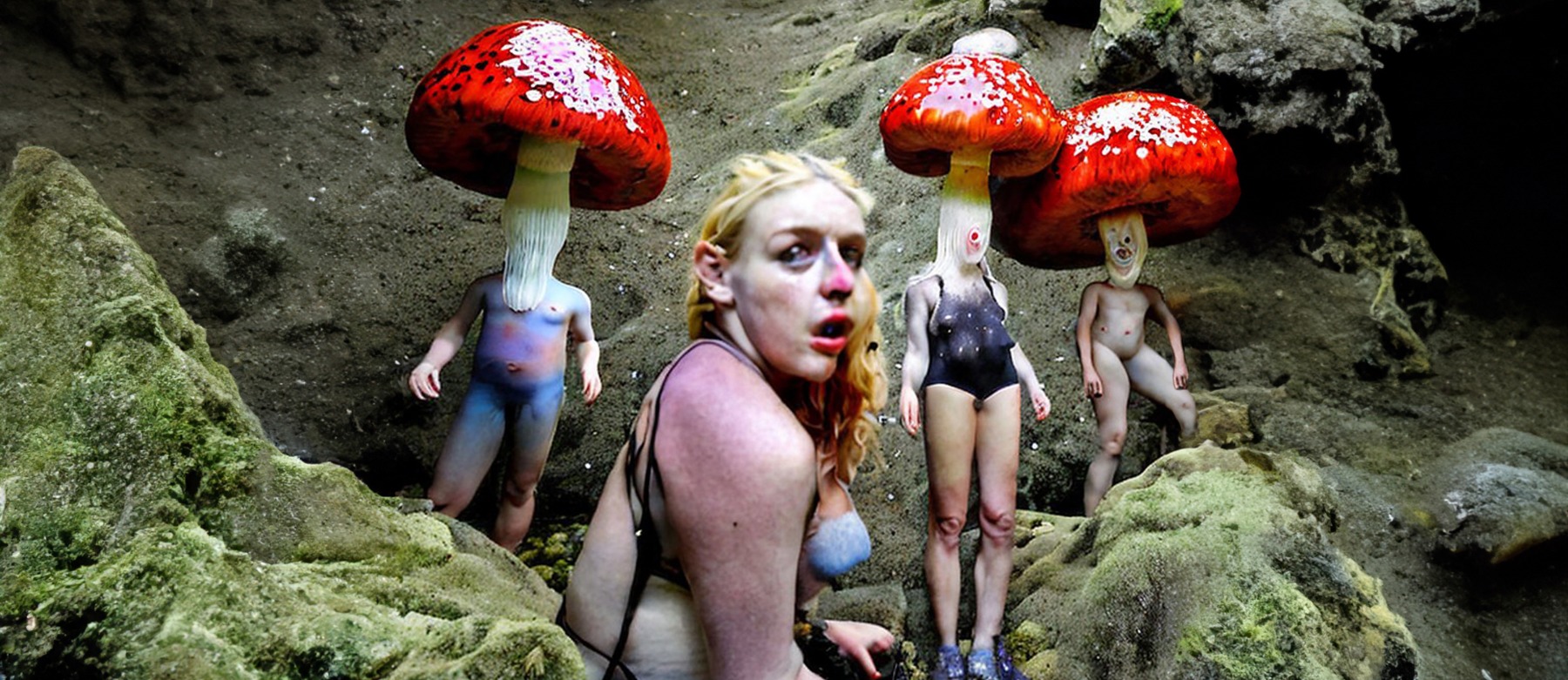
Dear figure, whom did you hang out with last night?
Until 25 August
In contemporary art, the figure has been transformed by film. This exhibition, too, has figures that gravitate towards cinematic framing and animation. Emergent or evanescent, they are captured and described (depicted) as they are in a unique moment in time. The artists have extracted certain critical moments from a flowing, continuous motion, and these have become the artwork’s subject and acquired stirring pathos. The exhibition has figures that come straight from the film medium and address the viewer in its language. Others are rooted in enigmatic colour painting or narrative illustration. There is subtractive sculpture with its bestial anthropomorphism. There is cast bronze, ceramics and fur. The exhibition juxtaposes AI-generated figures with fantastic images born in the human imagination and contrasts hinted traces of figures in gestural abstraction with photographed or painted figures whose origins are manifestly in the subculture.
Featured artists: Diāna Adamaite, Kristaps Ancāns, Arnis Balčus, Aigars Bikše, Kristians Brekte, Sigita Daugule, Roberts Diners un Lilija Dinere, Kristaps Epners, Miķelis Fišers, Gints Gabrāns, Ieva Iltnere, Jānis Mitrēvics, Ernests Kļaviņš, Plastic Afterlife (Kristians Aglonietis, Patrīcija Māra Vilsone) & Agate Tūna, Krišs Salmanis, Sabīne Vernere, Evelīna Vida and Paula Zvane. Exhibition curator: Inga Šteimane.
LITHUANIA, Vilnius
National Gallery of Art
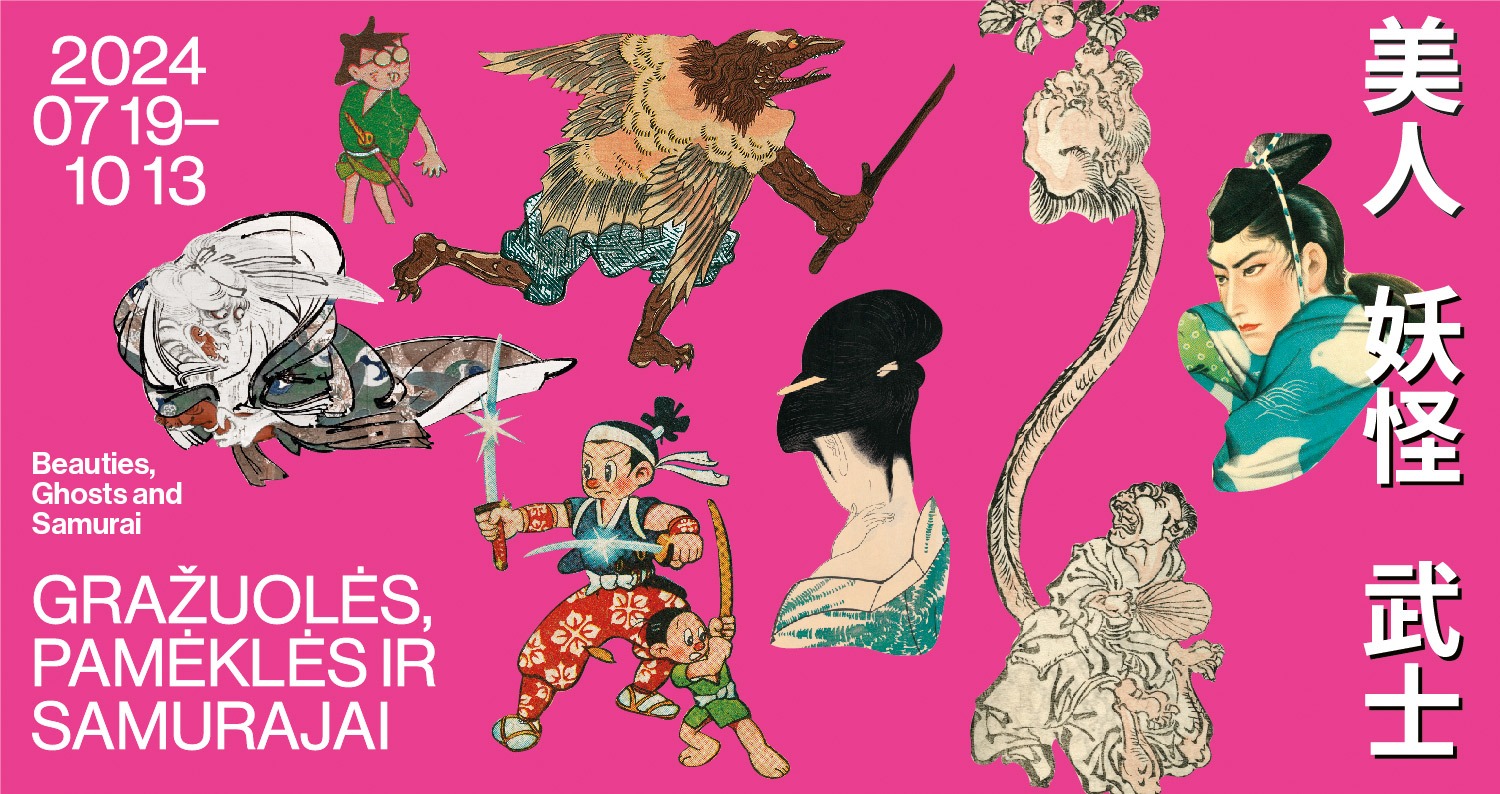
Beauties, Ghosts and Samurai. Japan's pop culture tradition from Edo period ukiyo-e to 20th-21st-century manga, anime and sūpā furatto
19 July – 13 October
When does culture become truly popular? When it ceases to be the exclusive domain of the nobility and the wealthy, and spreads among the middle class and other less politically empowered social classes. A prime example of this phenomenon was in 17th century Edo (modern-day Tokyo), where a strictly hierarchical society led to the establishment of a leisure and entertainment space accessible to the townspeople (chōnin[町人])-the Yoshiwara district. Yoshiwara was the birthplace of Japanese popular culture, which enjoyed enormous success far beyond Japan’s borders. This cultural hub fosteredkabukitheatre, the art ofikebanaflower arrangement,haikaipoetry, and the colorful woodblock prints ofukiyo-e. These prints, once considered lowly, cost as much as a meal at a city eatery and were sometimes used to wrap precious porcelain and ivory. This was the first time in world history that a politically uninfluential group of people, unable to travel abroad, created high-level art for their own needs rather than for the upper classes (rulers, aristocrats, clergy).
This historical-panoramic exhibition is one of the few attempts (and the first in Lithuania) to bring together and reveal the interconnectedness of what has often been separated, even today: ukiyo-e prints, historical giga cartoons, eroticshungabooklets, commercial hikifuda posters, pre-war and post-war manga comics, children’s gamemenkocards, posters for anime movies and computer games, promotional videos for the famous cosmetics company Shiseido, an animated historical kabuki theatre curtain, excerpts from famous anime films, and works of Japanese contemporary art (including thesūpāfurattomovement)-from painting and printmaking to photography, animation, and sculpture-that reflect (and at times ironise and question) all of the above.
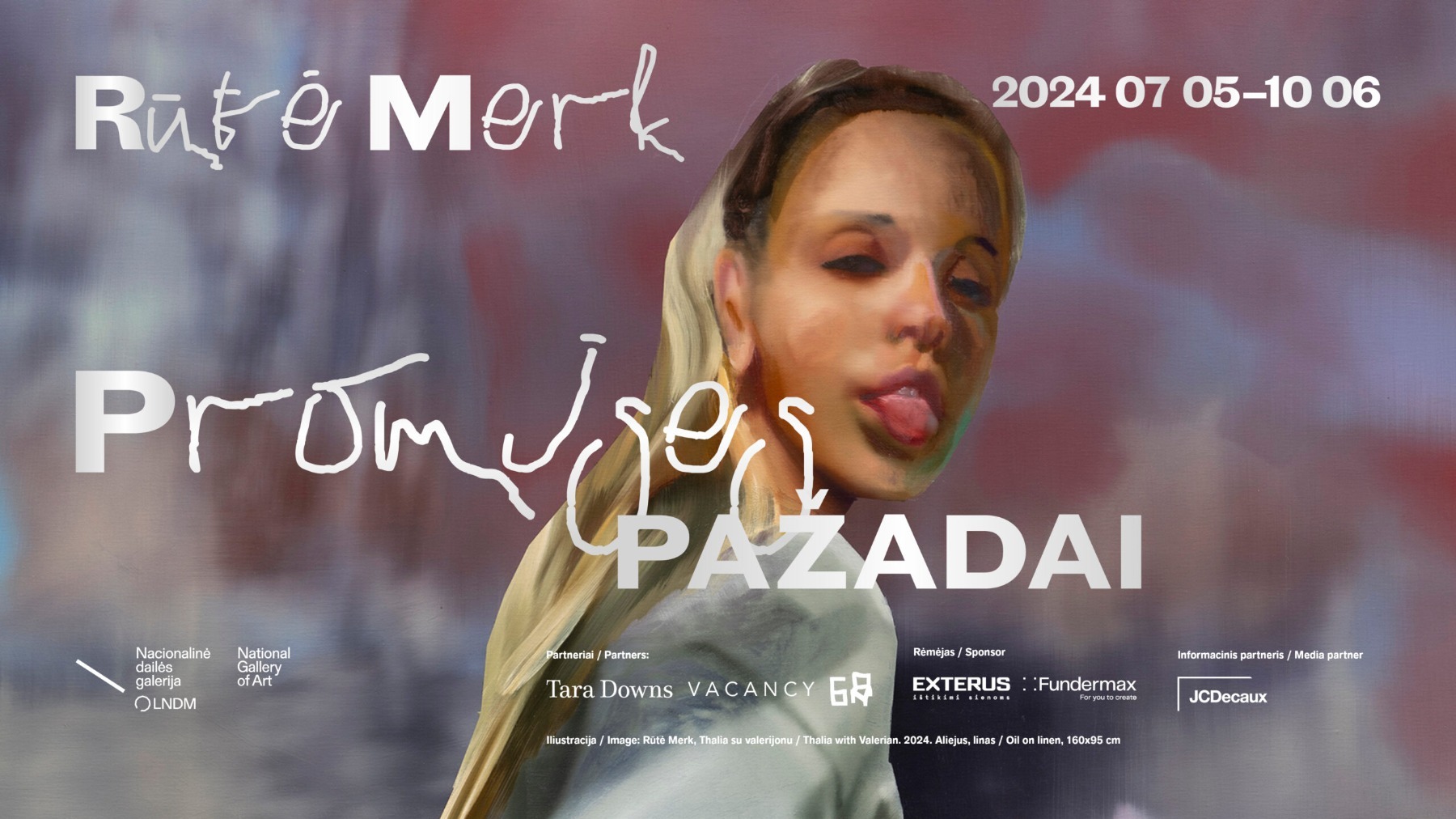
Rūtė Merk. Promises
Until 6 October
The visitors are invited to reflect how the advanced technology alters our bodies, to revisit the very concept of corporeal and how the medium of painting is capable of rendering the desires of our time and the promises of technologies. In her exhibition Promises, Merk, lionized by the Lithuanian and foreign art critics as one of the most intriguing artists of the young generation, opts for the classical genres of portrait and still life and the traditional painting in oils to design the archetypes of our time and their shifting boundaries in the contemporary world. The material and virtual, the natural and artificial, the particular and abstract are bedfellows in her art pieces. The curator of the event Inesa Brašiškė describes how the artist fashions her portraits from the elements dug from digital culture, merged with her personal experience and impressions. “Even though Merk’s portraits flirt with the history of painting, there are no doubts they evoke not the times of folds of robes, but of sweatpants and business casual suits. These are the types representing popular culture and fashion, and the idiosyncrasies of the millennials, produced from bits and parts of the artist’s memories, impressions and a deliberate archeology of the digital culture.
MO Museum
Jurij Kozyrev, From the Collection of Sandra Straukaitė. Photo Session at Jūrmala Beach, Latvia, 1992. Digital print, 20 × 30 cm. Courtesy of Bruno Birmanis.
We Don’t Do This. Intimacy, Norms, and Fantasies in Baltic Art
Until 8 September
Sexuality is a central part of human life, as are desires, fantasies, gender, and the relationships we form. No less widespread is the wish to impose control over these facets of life. Bringing together a diverse range of works drawn from museum and private collections, as well as new commissions, We Don’t Do This. Intimacy, Norms, and Fantasies in Baltic Art focuses on gender representations and relations in visual art of the Baltic region from the 1960s until the present. The exhibition borrows its title from an eponymously titled drawing by Česlovas Lukenskas from 1984 – Šito pas mus nėra. Lukenskas’ statement anticipated the famous 1986 tele-bridge between the USSR and the United States, where a woman on the Soviet side remarked that there was no sex in Soviet TV commercials. Since Stalin, the USSR was famously anti-sexual: Sexuality-related content and discussions were widely censored from the public for many decades. We ask why sex was so suppressed and what kind of love was allowed. Through new research in Baltic art collections, re-interpretations of art historical narratives, and by following recent academic writing on sexual culture in the Baltics, this exhibition explores how different the region’s public notions of intimacy, gender, love, and sexuality are today. How much are we still under the spell of the dreams of the Soviet period and how have national aims changed over time? Curators: Inga Lāce, Adomas Narkevičius, Rebeka Põldsam.
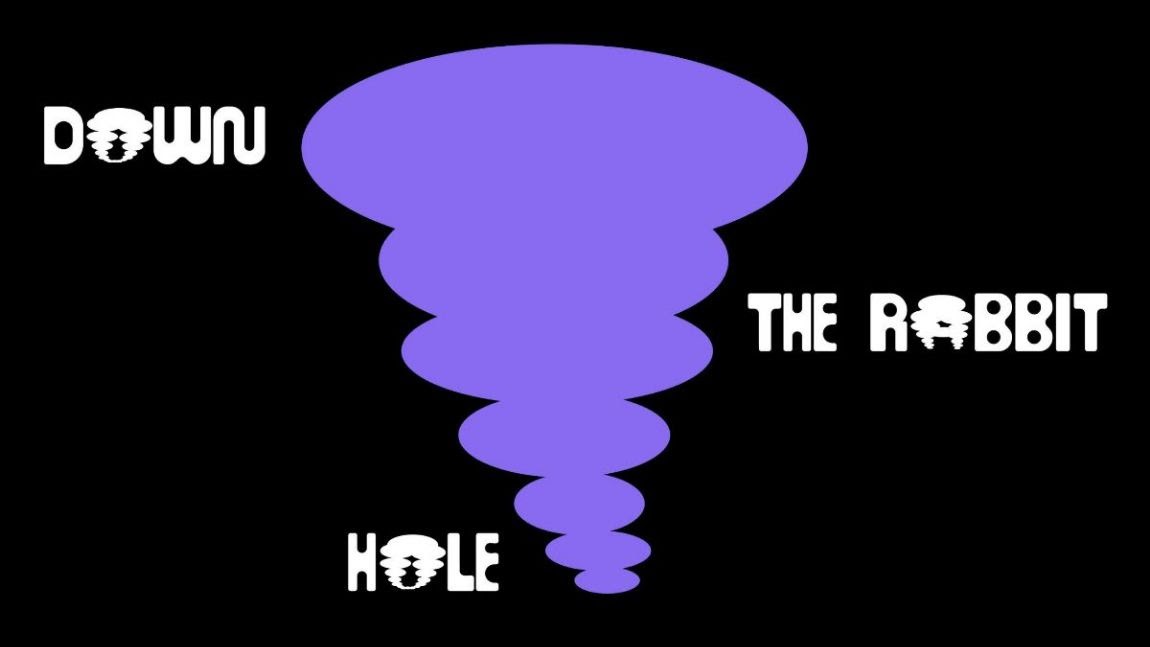
Down the Rabbit Hole
Until 3 November
The exhibition Down the Rabbit Hole delves into the phenomena of paganism, spirituality and conspiracy through diverse artworks by Baltic artists. The show suggests to look at paganism and spirituality as a romanticized historical refuge, pointing to its transformation during the recent years, as it increasingly takes on conspiratorial elements dressed in corporate language. During recent years, neo-paganism has been on the rise, blending into mainstream culture while also intertwining with conspiratorial beliefs. Within the exhibition, the artworks that form an interplay between conspirituality, selfhood, and the phenomenon of paganism are showcased both in a critical and celebratory way. The exhibition Down the Rabbit Hole aims to demonstrate the intergenerational connection between artistic practices and how traumatic experiences within the socio-political landscape have been expressed in the light of conspirituality. Artists: Līga Spunde (1990), Anastasia Sosunova (1993), Viktorija Daniliauskaitė (1951), Darja Popolitova (1989), Aistė Ramūnaitė (1957), Vita Zaman (1976), Katrīna Neiburga (1978), Laura Põld (1984), Nijolė Valadkevičiūtė (1944–2020), Gertrūda Gilytė (1992).
Vytautas Kasiulis Museum of Art
Marija Teresė Rožanskaitė, X-Ray Therapy, 1977. Oil on canvas, Courtesy of The Lithuanian National Museum of Art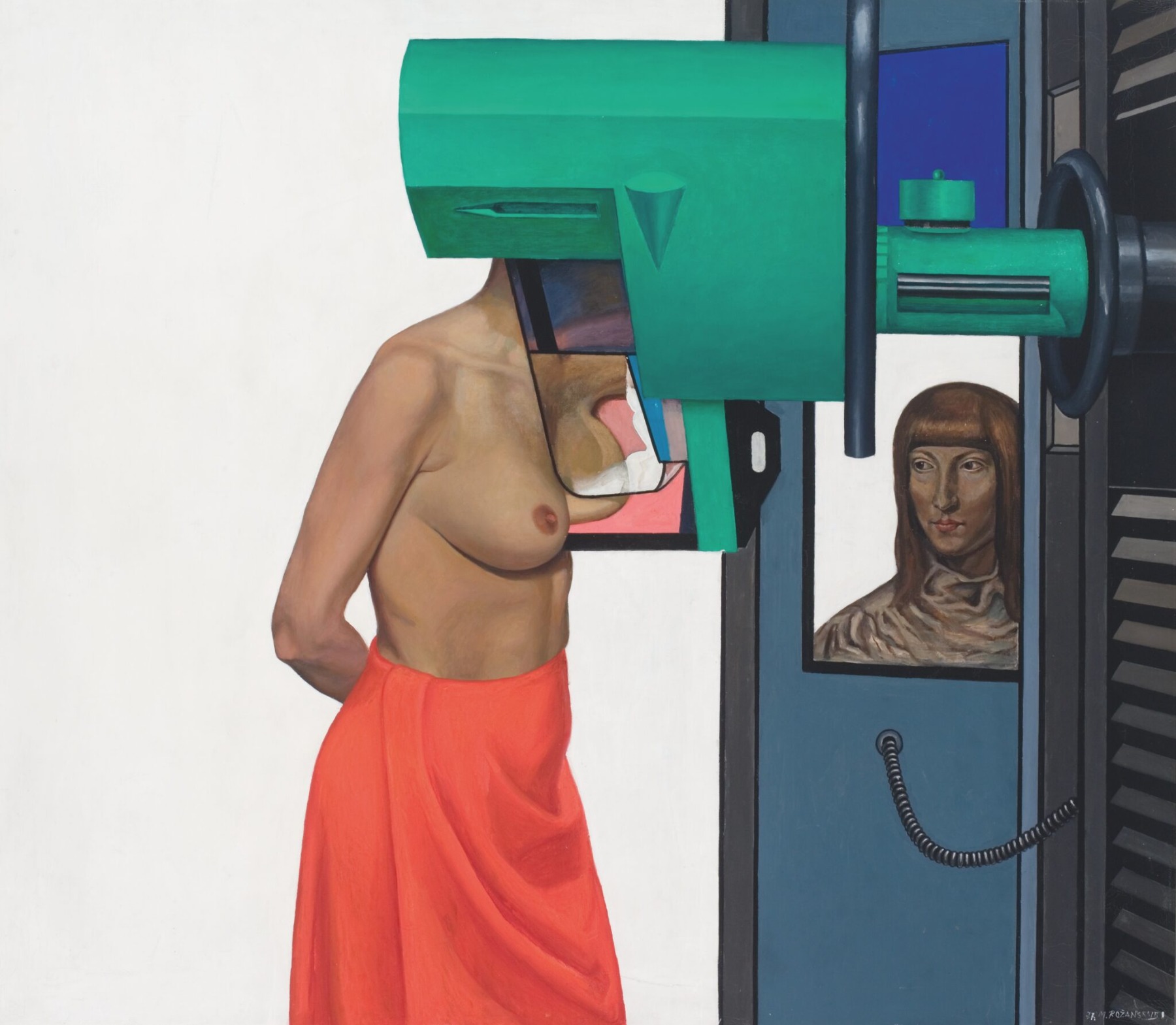
Unframed: Leis, Tabaka, Rožanskaitė
Until 8 September
The exhibition focuses on the works of three Baltic women artists – Malle Leis (1940–2017), Maija Tabaka (1939) and Marija Teresė Rožanskaitė (1933–2007) – in the late Soviet era of the 1970s and 1980s. All three of the artists challenged contemporary art discourses through non-conventional approaches to self-representation, ways of creating space and reflections on being artists. The title Unframed refers to the boundaries that all three artists crossed in their works, but also to a new interpretative horizon that their works create for each other. Moreover, all three artists produced a significant number of images in which the (female) protagonist steps out of the picture or turns her back on the viewer, creating visual metaphors of leaving or moving on to a new territory. In other works, the artists played with multiple frames that shift the perception of a stable and uniform reality.
Leis, Tabaka and Rožanskaitė were all exceptional artists in Soviet-occupied Estonia, Latvia and Lithuania. The education they got from art institutes in Tallinn, Riga and Vilnius in the 1950s and 1960s was similar in terms of its ideological and aesthetic principles, but soon they all moved beyond those principles: not necessarily by directly opposing their current art discourses, but by navigating them in ways that shifted and blurred the meanings of seemingly straightforward motifs and gestures.
Kazys Varnelis House-Museum

Monika Radžiūnaitė. And I’m Only Human
Until 2 October
Monika Radžiūnaitė (born in 1992) is a representative of the young painters’ generation of Vilnius. The artist’s characteristics are irony, the transformation of historical and cultural plots, which is not appealing to the actual, chronological, or thematic reality of past times, but playing with the new links between symbols, allusions, and images. The starting point of her creation was the exposition at Kazys Varnelis House-Museum – an installation based on aesthetic and meaningful constellations of different epochs, a space of timeless museum sacralism that stretches beyond the boundaries of everyday life. Varnelis’ conception of space was greatly influenced by many years of practice in the field of ecclesiastical art, but there are no direct references to sacred art in the museum. The concept of the exhibition is based on the creative error strategy developed by M. Radžiūnaitė. “Erroneous” reading is revealed in the artist’s recreated iconography, in the titles of paintings translated into Latin by using a Google translator, in glitch-gothic exhibition architecture. The viewer is provoked to critically reflect on the interaction between text and image, on the error, which is unavoidable even in the technological era, and on the excessively serious approach to the heritage of the past.
Vartai gallery
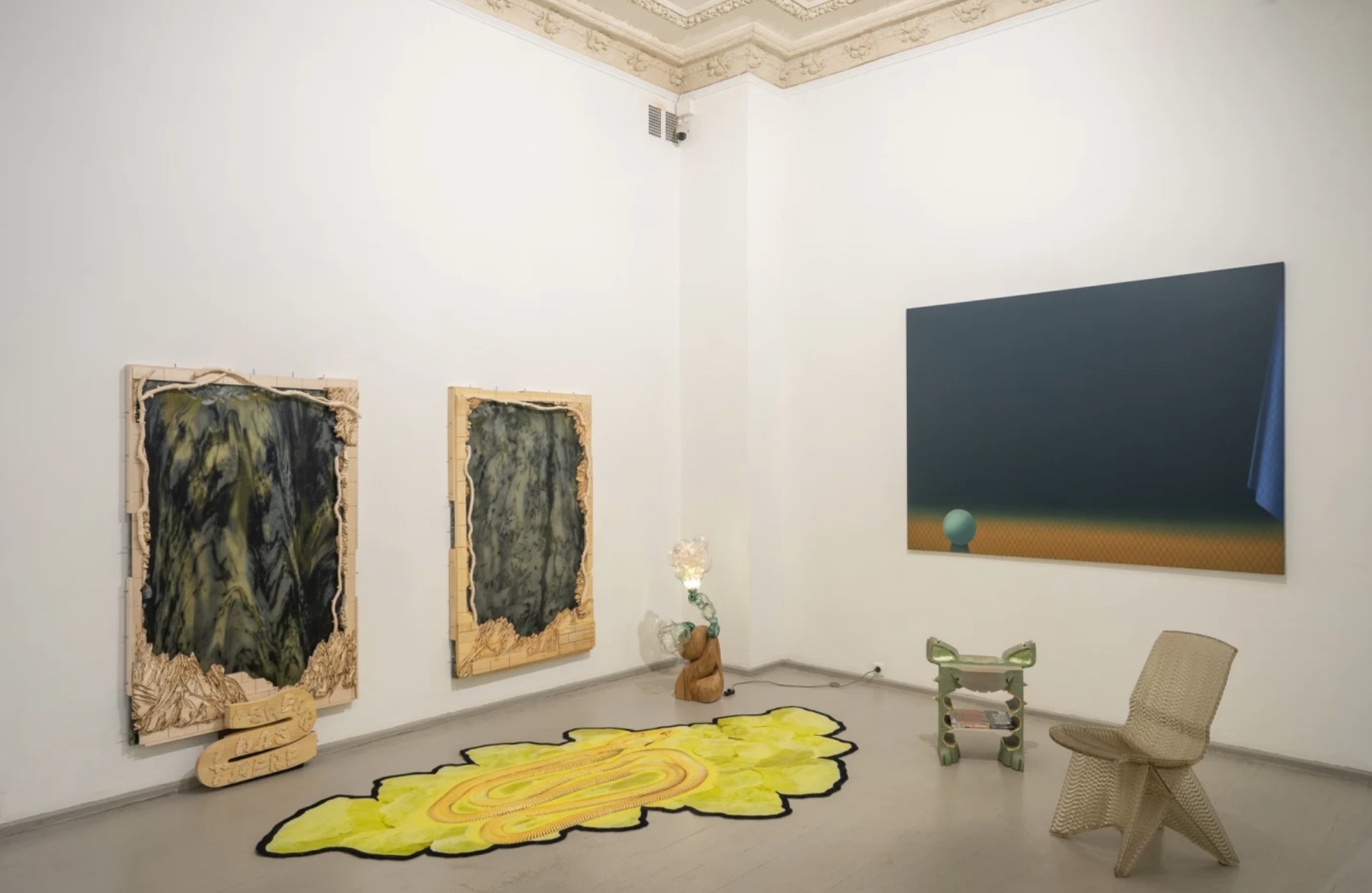
SPECTRUM 2: SUMMER GROUP SHOW
Until 31 August
Artists and designers featured in the group show SPECTRUM 2: Gytis Arošius / Kotryna Butautytė / Daydreaming Objects / Vilius Dringelis / Kiki van Eijk / Faktura / Govert Flint / Marija Puipaitė & Vytautas Gečas / Vytautas Gečas / Liepa Gradauskaitė / Kristijonas Gurčinas / Kodai Iwamoto / Vytenis Jankūnas / Rokas Janušonis / Linas Jusionis / Geistė Kinčinaitytė / Dirk van der Kooij / Ignas Krunglevičius / Luuk van Laarhoven / Flora Lechner / Mantas Lesauskas / Etienne Marc / Alina Melnikova / Donata Minderytė / Moustache / Robertas Narkus / Vesta Rugilė Nausėdaitė / Milda Palivonaitė / Patricija Pažus / Emilija Povilanskaitė / Monika Radžiūnaitė / Dorian Renardm / Gerimantas Ribinskas / Indrė Rybakovaitė / Dominykas Sidorovas / Unė Šilinytė / Laurynas Skeisgiela / Arnoldas Šliuževičius / SetP Stanikas / Eugenija Tereščenko / Trafik / Bram Vanderbeke /Neringa Vasiliauskaitė / Vita Zaman
LITHUANIA, Nida
Nida Art Colony of Vilnius Academy of Arts
RESONANCE BEYOND ESCAPE: QWORKAHOLICS ANONYMOUS III
Until 6 October
QWORKAHOLICS ANONYMOUS reimagines the format of de-addiction programs “Alcoholics Anonyomus” to create space for ‘doing nothing’, asserting that Trans and other radical figures do important work in their very acts of survival. This is a project initiated by artist-curator Fadescha, part I (2020) and part II (2022) took the form of video works. Part III comprises an artist residency and an exhibition curated by Party Office at Nida Art Colony of Vilnius Academy of Arts, Lithuania. Participants include mid-career and emerging artists mostly living away from their homelands — countries with different colonial histories and present. Anna Ehrenstein, Blue Paul Fleming, Gabriele Gervickaite, Margot Vic, Malik Irtiza, Mihaela Drăgan, Mila Kostianá, Rafiki, Noor Abed, Pêdra Costa, Queer Falafel, Shripad Sinnakaar, Simon(e) Jaikiriuma Paetau + Natalia Escobar and The Albanian Conference (Anna Ehrenstein, Fadescha, Rebecca Pokua Korang, DNA).
The exhibition RESONANCE BEYOND ESCAPE: QWORKAHOLICS ANONYMOUS III, through poetry, performance-videos and video art, illustrates resemblances in the complex and diverse colonial histories that engulf us and that we embody, asserting the need for personal agency in one’s story and collective allyship against the supremacist order. Throughout the exhibition, from June to October, along with a programme of film screenings and lectures curated by Party Office, NAC will invite interludes by Lithuania-based organisers and artists to critically illustrate their positionality within the discourse of race, post-colonial nationalism, global economics and neo-liberalism.
Title image: Atis Jakobsons. From the exhibition 'Heaven's bodies'
